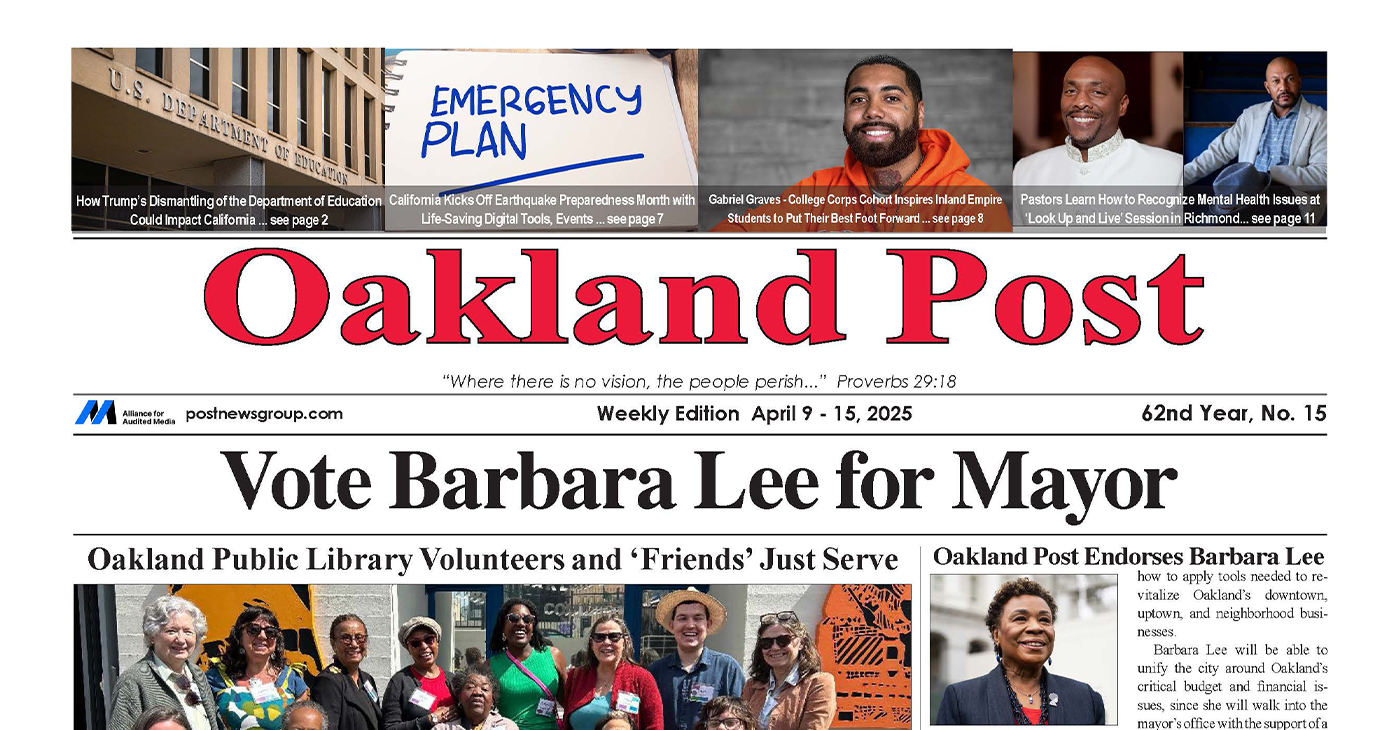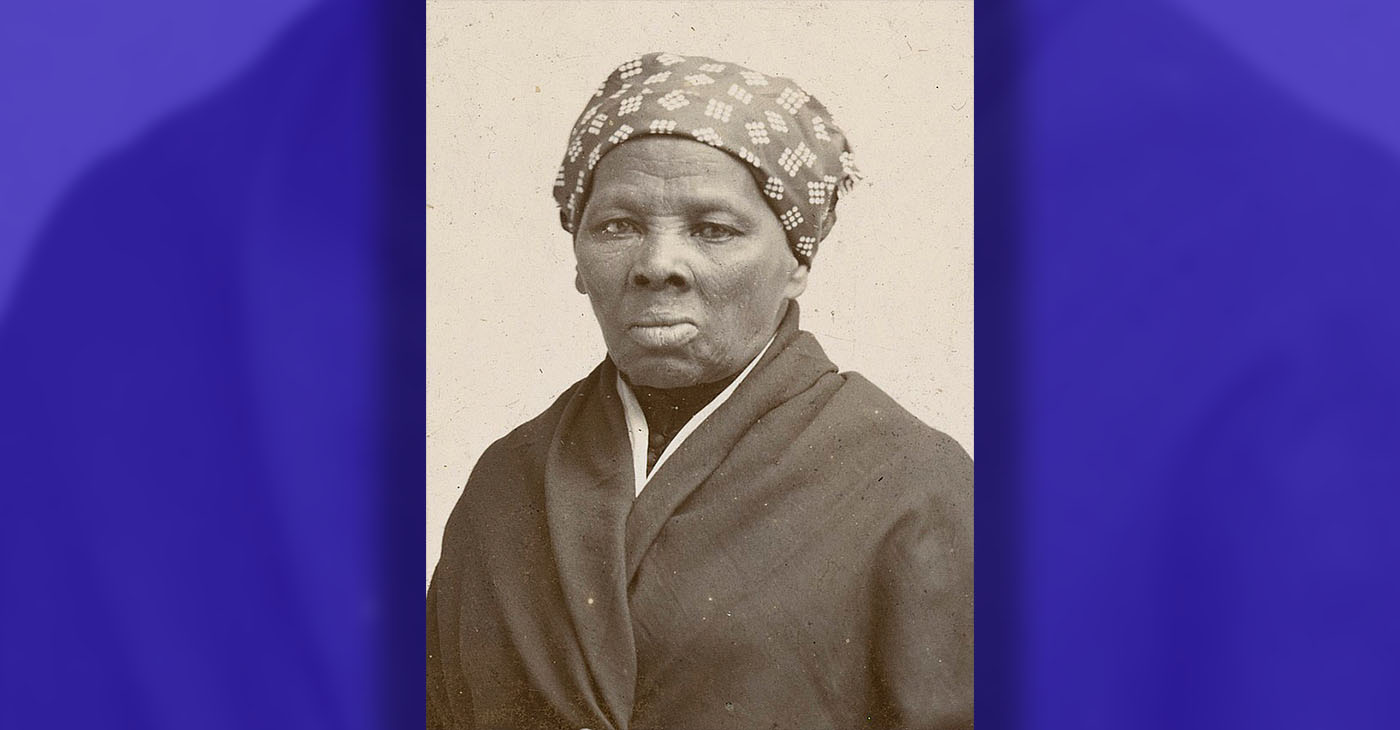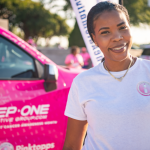National
Rape’s Other Victims

Tiffany Perry, a child of rape, says that there are no services targeted to people conceived through sexual assault. (Photo by Tiffany Perry)
By Jazelle Hunt
NNPA Washington Correspondent
SECOND IN A SERIES
WASHINGTON (NNPA) – The first time Tiffany Perry learned about her conception, she was too innocent to fully understand the gentle explanation her mother was offering, too young to process such a heavy and complicated behavior.
What she distinctly remembers is watching “Oprah” with her mom a few years later, as a 10-year-old. It was the television episode in which Oprah revealed to the world that she was a rape survivor.
“When [Oprah] said herself, and started crying…my mom just fell apart,” the 39-year-old Jersey City, N.J. native recounted. “I tried to console her, but she was inconsolable. It was just so intense.”
At 15 years old, Perry’s mother was raped by her foster mother’s 21-year-old married son. His wife had invited Perry’s mother into their home to babysit their child and to escape her foster mother’s wrath.
Her foster brother raped her repeatedly for two weeks, sometimes at knifepoint. Despite being a virgin at the time and under the care of the state, few people bothered to inquire about the details of the pregnancy. Plus, the fact that he had threatened to kill her, kept Perry’s mother silent.
“Maybe, as a Black person, they just saw this as another teenage pregnancy, and nobody really asked any questions,” Perry said, trying to explain the unexplainable. “I can’t say with certainty…but I’m thinking that if she was White in a foster home and her belly started to grow, then maybe a flag would’ve went up somewhere and somebody would’ve investigated more as to why this foster child is pregnant.”
In subsequent years, freed by the Oprah episode, Perry’s mother became more forthcoming.
“As I grew up, she told me more details of the attack. It was like she had been carrying this around the whole time.”
But opening that door triggered another set of emotions in Perry.
“I went through different feelings of inadequacy, feeling like I had to overcompensate because I was a child of a rape. Even now, when I say the word ‘inadequate,’ I get choked up,” she said, her voice trembling with emotion.
“My mom was awesome, she never talked down to me….my mom always praised me, always gave me love,” Perry said. “But I felt like…I owed it to her to be perfect so she doesn’t feel like keeping me was a mistake.”
And there was the question of what she would say when asked about her father. Perry chose to say that he was dead, that he had left, or that she didn’t know him, depending on the questioner. But even while denying his existence, there was also a deep craving to know about this man, wherever he was.
Wanted to know her roots
More than anything else, she did not want her mother to feel badly.
“I didn’t rape her, but when I was younger, I used to feel like it was my fault,” she recalled. “The dreams that she probably could have fulfilled – if she had stayed that innocent virgin who wanted to be a lawyer – she wasn’t going to be able to fulfill those because I was here.”
Instead of pursuing her dreams, Perry’s mother had to shift her focus, looking after the needs of an infant rather than look forward to a career as an attorney.
“Sometimes she was a little more paranoid than I would think is regular,” Perry said. “When I was growing up my mom was so strict, or smothering, when it came down to me, particularly.”
Once, her mother sent her to the corner store for a few items. There, she ran into a family friend, an older man. He offered to buy her something – she chose cookies – and they parted ways.
She thought nothing of it – until her mother went into a rage.
“She flew off the handle. She beat me with an extension cord. And she told me, ‘Don’t ever accept anything from a man, they can’t be trusted, you don’t know their intentions.’ I’m six. I don’t have a clue what she is talking about.
“She cried. When I got older and reminded her about the incident, she explained to me that she didn’t trust anybody, she didn’t trust any man. And she wanted me to be extra careful. She wanted to put that fear in me.”
It instilled both fear and confusion, blurring the lines of what was acceptable with the boys and men in her world.
“It’s just assumed whenever a woman gets raped, she never gets pregnant, or if she does get pregnant, the child is automatically aborted or adopted,” she said. “There’s this group of people who’ve been conceived by rape and nobody ever discusses us. I want to talk about it because we exist. I exist.”
Unresolved trauma
Philadelphia-based author, activist, and scholar Ewuare Osayande wasn’t born of this violence, but also grew up in its shadow.
His mother spent her childhood at the mercy of a sexually abusive stepfather. The oldest of eight children, she was the only one who was not his blood-relative. The abuse was the family’s open secret. She grew up to date, marry, and divorce abusive men.
Justice Department data show that Black women are more likely than their White counterparts to be assaulted, sexually and otherwise by strangers and by family members.
“It was never the case where my mother cowered in the face of her abuse. She didn’t hold her tongue, she always spoke her mind,” Osayande said.
Today, Osayande is the creator of Project ONUS: Redefining Black Manhood, a series of anti-sexist workshops for Black men. It took time and life experiences before he was able to connect the dots and realize how his mother’s abuse – some he had witnessed, some he had not – had affected his own development.
“That processing has been life-long,” he explained. “I’m a divorcée. In that relationship, I found myself becoming like the men I swore for years I would never be. It never got to the point where I became physically abusive, but certainly emotionally abusive.”
As the son of a rape and abuse survivor, and as a formerly abusive person, he also realized he had to address his own internal conflicts and beliefs.
“It’s been a very real, clear determination on my part to make sense of the life I’ve experienced as a Black man, in a gendered way,” he explained. “It’s been my desire to become an effective ally in that struggle, in that engagement in the world in which Black women exist, and experience.”
Secondary survivors need help
In the sea of services for survivors, most resources geared toward family and friends coach them on how to best support the survivor in their life. Although crisis centers and hotlines are equipped to aid and counsel family and friends of survivors, few resources address the challenges these relatives face.
The book, I Will Survive: The African American Guide to Healing from Sexual Assault and Abuse, cites a study that draws parallels between the emotions of boyfriends and husbands of women who have been sexually assaulted, and the wives and girlfriends of war veterans.
“Not surprisingly, past or recent sexual trauma can present unique challenges for the survivor’s partner,” writes Lori Robinson, author of the book. “You are a victim too. Some experts call you the secondary victim. After all you are experiencing many of the same emotions sexual assault victims feel.”
Tiffany Perry’s breaking point came about 20 years ago. A probation officer contacted her out of the blue, looking for her father. He had given her name and birthdate as his next-of-kin. She learned that not only did he know about her, but he knew where she lived. To this day, the two live less than an hour apart. She has never contacted him, but has learned a bit about his life via a cousin and aunt on Facebook.
Perry’s mother remains her primary source of support.
“When I went to go look for support groups for children of rape victims or children conceived out of rape, they’re pretty much nonexistent,” Perry says. “[Rape] is so common we don’t even cringe when we hear about it. Rape is inhumane, and people are not treating it like it’s inhumane. They just treat it like ‘Well, it happens.’”
NEXT WEEK: Should we have faith in the faith community?
PART I: Rape and the myth of the “Strong Black Woman”
(The project was made possible by a grant from the National Health Journalism Fellowship, a program of the University of Southern California Annenberg School for Communication and Journalism.)
###
Activism
Oakland Post: Week of April 9 – 15, 2025
The printed Weekly Edition of the Oakland Post: Week of April 9 – 15, 2025

To enlarge your view of this issue, use the slider, magnifying glass icon or full page icon in the lower right corner of the browser window.
#NNPA BlackPress
Harriet Tubman Scrubbed; DEI Dismantled
A photograph of Harriet Tubman has been removed from a National Park Service webpage about the Underground Railroad.

By Stacy M. Brown
BlackPressUSA.com Senior National Correspondent
A photograph of Harriet Tubman has been removed from a National Park Service webpage about the Underground Railroad. Previously, the page opened with a photo of Tubman and a description that acknowledged slavery and the efforts of enslaved African Americans to escape bondage. That language is now gone. In its place are images of postage stamps and a reworded introduction that refers to the Underground Railroad as “one of the most significant expressions of the American civil rights movement” that “bridged the divides of race.” The updated version does not mention slavery. The change follows an executive order signed by President Donald Trump last month directing the Smithsonian Institution to eliminate “divisive narratives.” A review by The Washington Post found that since Trump’s return to office, dozens of webpages across the National Park Service have been edited to soften or eliminate references to slavery, racial injustice, and the historical struggles of African Americans.
On the website for the Stone National Historic Site in Maryland, mentions of Declaration of Independence signer Thomas Stone owning enslaved people were removed. Elsewhere, references to “enslaved African Americans” were changed to “enslaved workers.” A page exploring Benjamin Franklin’s views on slavery and his slave ownership was taken offline. The Defense Department also removed several webpages related to diversity and minority contributions to the U.S. military, including a tribute to Jackie Robinson’s Army service and content honoring the Tuskegee Airmen, the Navajo Code Talkers, and the Marines at Iwo Jima. Officials later said some content would be republished after public outcry. Nearly 400 books were removed from the library at the U.S. Naval Academy. The list includes Maya Angelou’s I Know Why the Caged Bird Sings, Memorializing the Holocaust, Half American, and Pursuing Trayvon Martin. Officials cited Defense Secretary Pete Hegseth’s directive to eliminate books that promote diversity, equity, and inclusion.
Private companies contracting with the federal government have begun rolling back language diversity and initiatives in response to federal pressure. UnitedHealth Group removed DEI language from its website. Goldman Sachs dropped its diversity requirement for companies it takes public and revised annual filings to reflect “developments in the law.” Bank of America replaced the term “diversity” with “talent” and “opportunity.” Deloitte instructed U.S.-based employees working with federal clients to remove pronouns from email signatures. Coca-Cola, PepsiCo, Disney, Paramount, JPMorgan Chase, Victoria’s Secret, and others have renamed or eliminated DEI programs. Some, like Paramount, cited the need to comply with Trump’s executive orders.
Target has faced financial and reputational fallout following its reversal of DEI commitments. The company has lost over $12.4 billion in revenue and faces multiple lawsuits related to its shifting policies. Rev. Jamal Bryant launched a national “Target Fast,” urging community mobilization. Separately, the NAACP and the National Newspaper Publishers Association (NNPA) initiated public education and selective buying campaigns to increase pressure on the retail giant.
“Black consumers helped build Target into a retail giant, and now they are making their voices heard,” said Dr. Benjamin F. Chavis Jr., president and CEO of the NNPA. “If corporations believe they can roll back diversity commitments without consequence, they are mistaken.”
#NNPA BlackPress
What Parents Think about Childcare Right Now
BLACKPRESSUSA NEWSWIRE — Children’s earliest years are a critical period when the foundation is built for lifelong physical health and emotional well-being

By: RAPID, Stanford Center on Early Childhood
The RAPID Survey Project, based in the Stanford Center on Early Childhood, is a program of ongoing national and place-based surveys designed to gather essential information on the needs, health-promoting behaviors, and well-being of young children and their caregivers. Our objective is to make timely and actionable data on the experiences of parents, caregivers, and young children available in an ongoing manner to support parent- and data-informed decision-making. Children’s earliest years are a critical period when the foundation is built for lifelong physical health and emotional well-being. Research shows that consistent, responsive caregiving is conducive to healthy development during these early years. We asked parents of infants and toddlers (birth to age 3) to tell us about their childcare experiences and preferences. Using responses from parents of infants or toddlers who participated in national RAPID household surveys in January 2024 and November 2024, we aim to understand the types of childcare that families with infants and toddlers use and what is most important to parents when selecting child care.
Family, friends, and neighbor (FFN) care is the most common childcare choice for families with infants and toddlers.
We asked parents of infants and toddlers questions about how much childcare they use, as well as their experiences using center-based care, home-based care, and both paid and unpaid family, friend, and neighbor (FFN) care. More than two in three (68%) parents of infants and toddlers use childcare for five hours or more per week. Among these families, and consistent with other national data, FFN care makes up the largest share of providers of infants and toddlers.
Responses from the survey show that, on a weekly basis:
—32% of parents use center-based care
—26% of parents use unpaid FFN care
—13% of parents use paid FFN care
—12% of parents use home-based care in the childcare provider’s residence
“Sometimes it is difficult to find relatives/friends who I trust and are available as sometimes their plans change.” Parent in Wisconsin
“I’m relying on family and things arise that make them unable to help. I have looked into center-based care and considered going back to work, but it will cost me more for childcare than I can make in income to pay for it.” Parent in Ohio
“I use babysitters, mostly teenagers, so their schedules are sometimes unreliable. They do their best, but they have other commitments, too. They also can’t always work during the day, which is when I need them.” Parent in Texas
Reliable access to childcare is a particular concern for many parents of infants and toddlers.
The predictable schedules and routines that are associated with stable access to childcare support the positive well-being and development of children, families, and caregivers. In their responses to open-ended questions, parents of infants and toddlers spoke about the different challenges they experience securing childcare, including issues with affordability, hours, location, and trust in their provider. As indicated by the quotes in this fact sheet, parents mentioned concerns about providers meeting the specific and intensive caregiving needs of infants and toddlers, while at the same time families navigate high costs, low availability, and inconsistent schedules. Additionally, many parents, particularly those living in rural areas, noted the limited childcare options near their home or work. This points to the barriers to reliable childcare access that families with infants and toddlers face, and these data can inform policies and programs that support families in meeting this critical need.
“In a rural area, childcare is very hard to find, and rates are not competitive because they don’t have to be.” Parent in Montana
“I had challenges finding other part-time care closer to where we live so I drive one hour twice a week for part-time care.” Parent in Louisiana
“We had to contact this provider very early on. I was maybe five or six weeks pregnant. And she happened to have a spot. If we had waited much longer, we wouldn’t have gotten in.” Parent in South Carolina
“I am currently using backup care days offered by my employer as our primary form of childcare for our younger child. In March, I will run out of days to use, and we are struggling to find an affordable option nearby that has availability when we need it.” Parent in Virginia
Trust in their childcare provider is the most important thing to families with infants and toddlers.
To understand families’ childcare needs, we asked parents what factor matters the most when selecting childcare for their infants and toddlers. We provided a list of factors to choose from for each type of childcare used. Across all types of childcare, parents of infants and toddlers are most likely to say that trust and/or comfortability with their provider is the top factor when they select child care for their family. Parents are significantly more likely to endorse trust and/or comfortability with their provider than any other factor, including affordability, availability, location, or the hours the provider is available.
Factors for selecting childcare, in order of frequency endorsed by parents of infants and toddlers:
- Trust and/or comfortability
- Affordability
- Availability
- Location
- Hours
“Finding a trustworthy and experienced caregiver who could handle our infant’s specific needs was a major concern.” Parent in New York
“Ensuring the caregiver has the necessary experience and qualifications to care for an infant adds another layer of difficulty.” Parent in Iowa
Predictable and nurturing caregiving contributes to positive early childhood development, and more work is needed to support families with infants and toddlers looking for childcare. RAPID data show that there is an unmet need among families with infants and toddlers for reliable, affordable, and trusted sources of childcare and that families are using a patchwork of childcare arrangements to find trusted sources of care for their infants and toddlers that they can afford and rely on. Parents themselves are experts in selecting the sources and settings of childcare that will best support their family and foster their child’s development, and they are placing an emphasis on selecting providers that their family trusts and feels comfortable with. These findings can inform policies and programs that address parents’ childcare concerns and experiences, so they are better supported in providing the healthy, responsive caregiving that is essential to their young children’s development.
-

 Activism3 weeks ago
Activism3 weeks agoWe Fought on Opposite Sides of the Sheng Thao Recall. Here’s Why We’re Uniting Behind Barbara Lee for Oakland Mayor
-

 Activism4 weeks ago
Activism4 weeks agoSan Francisco Is Investing Millions to Address Food Insecurity. Is Oakland Doing the Same?
-

 #NNPA BlackPress3 weeks ago
#NNPA BlackPress3 weeks agoRev. Dr. Jamal Bryant’s Black Church Target Boycott Mobilizes 150,000
-

 Activism3 weeks ago
Activism3 weeks agoFaith Leaders Back Barbara Lee for Mayor, Criticize Candidate Loren Taylor for Dishonest Campaigning
-

 Activism4 weeks ago
Activism4 weeks agoOakland Post: Week of March 12 – 18, 2025
-

 #NNPA BlackPress3 weeks ago
#NNPA BlackPress3 weeks agoRecently Approved Budget Plan Favors Wealthy, Slashes Aid to Low-Income Americans
-

 Activism3 weeks ago
Activism3 weeks agoGroup Takes First Steps to Recall District Attorney Diana Becton
-

 Activism2 weeks ago
Activism2 weeks agoOakland’s Most Vulnerable Neighborhoods Are Struggling to Eat and Stay Healthy




























































Pingback: Some Faith Leaders Victimize Rape Survivors Again | BlackPressUSA
Pingback: Some Faith Leaders Victimize Rape Survivors Again | BlackPressUSA
Pingback: Rape and the Myth of ‘The Strong Black Woman’ | BlackPressUSA
Pingback: Rape and the Myth of ‘The Strong Black Woman’ | BlackPressUSA